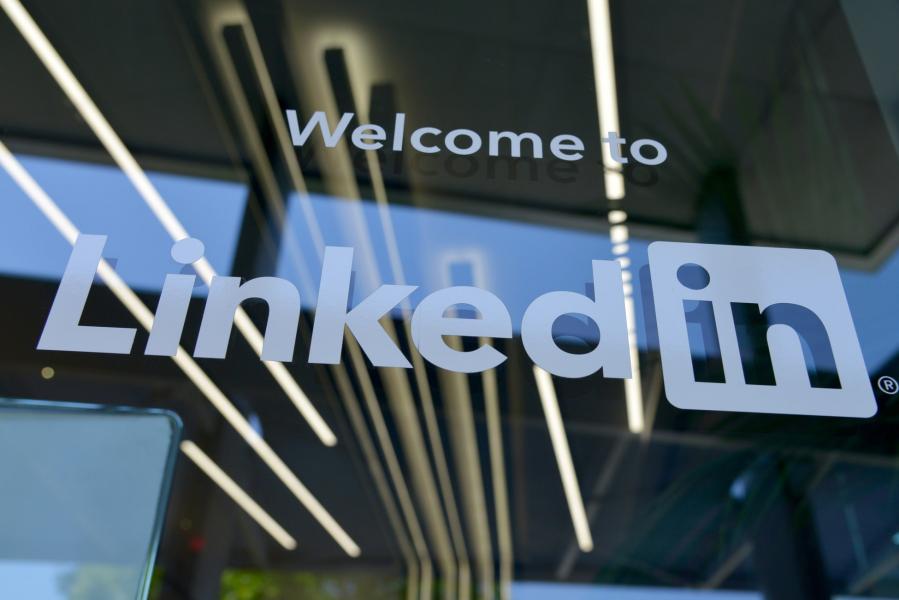
You're likely one of the legions of Facebook, Instagram or Snapchat users, but are you on LinkedIn? Just like Facebook, LinkedIn is a social networking site. Unlike Facebook, though, LinkedIn is used mainly by professionals to network with other professionals. To date, over 65 million members from over 200 countries are registered on the site --- and the number is growing.
Employees and job seekers use the site to network, but also to build a professional profile online and to look for jobs. Employers and recruiters use the site to find top talent, post jobs, build employment brand, and create company profiles. Even CEOs use LinkedIn for various reasons. In today's job market, having a LinkedIn account is a must!
It's free to open a LinkedIn account, but some might find creating a profile on the site a bit daunting. Given that LinkedIn is used professionally, setting up your profile requires some thought and time. In a lot of ways, the process is similar to writing your resume with some added complexities thanks to its online nature.
If you're preparing to create your LinkedIn profile, or if you're looking for ways on how to improve your profile, consider the following tips:
1. Complete your Profile
While filling out your profile may take a significant amount of time, it can be very beneficial to do so. A 100% complete LinkedIn profile increases your chances for an employment offer because it is40% more likely to be seen by an employer.
2. Select an Appropriate Picture
Choose a picture that reflects professionalism - that means no party or goofy pics. If possible, opt for high-quality solo shots.
3. Create a Dynamic and Accurate Summary Statement
The summary statement of your LinkedIn account is similar to the "Profile" section of your resume. It should succinctly and confidently highlight your qualifications as well as broad goals. Use short paragraphs to make your summary statement easily readable.
4. Share Your Expertise
Use relevant keywords in the "Specialties" field of your profile to improve the ways people find you on LinkedIn. Include your abilities, special interests, and personal values you bring to your professional performance. If you're passionate about certain social issues, you may even choose to note them here.
5. Enrich Your Profile with Applications
Through the various applications integrated with LinkedIn, you can let others know about the professional books you're reading, integrate your WordPress blog with your LinkedIn account, and even present PowerPoint slideshows.
6. Describe Your Experience
According to the LinkedIn Help pages, it's best not to copy and paste your resume when filling out the "Experience" section of your profile. Remember: LinkedIn is meant also for networking, not necessarily for job-hunting site. Go beyond what's in your resume and introduce yourself and talk about your experience and abilities as you would to someone you just met at a networking event.
7. Show Off Your Education
In addition to including all institutions you've attended, mention any majors and minors you have. It's perfectly appropriate to include study abroad programs and summer institutes. If you have a strong GPA (more than 3.5), include that information as well. Don't forget about any honors or awards you've won and activities you've been involved with around campus.
8. Ask For Recommendations
One of the key advantages of LinkedIn is that it allows you to ask current and past colleagues, clients, and employers to recommend your work. When you ask others to 'endorse' you on LinkedIn, try not to use the default message; instead, include a personalized message. You might want to provide guidance on what skill or personality trait you want them to focus on. Be courteous and thank those who have endorsed you. Also, return the favor and send meaningful recommendations --- or, better yet, send one first to entice your connections to leave one for you, too).
9. Set Yourself Apart from the Crowd by Filling Out the "Additional Information" Section of Your Profile:
-
Mention any key interests you have.
-
Add up to three websites that showcase your abilities or passions. This is a good section to include a link toyour blog orportfolio. Also, edit the default 'My Website' label to provide more information about where your guests are being redirected.
-
Include your Twitter information if you're comfortable adding this information.
-
List any trade associations or interest groups you currently belong to.
-
Mention any awards recognized by peers, customers or employers.
-
Join groups on LinkedIn - their logos will automatically be included in this section of your profile.
10. Set Up Your Public Profile
A public LinkedIn profile usually ranks high on a Google search, so setting up your public profile is a great way to build your online reputation. Show the "full view" and select other information --- such as your current and past positions or your education --- that you'd like to be public.
11. Include Contact Information
The "Personal Information" section of your profile is the appropriate place to include your phone number, instant messaging accounts, address, birthday, and marital status. Just a note about privacy: this section will not appear on your public profile, according to the LinkedIn help page aboutthe "Personal Information" section; the information only appears for your connections.
12. Edit Your Contact Settings
Let others know about your availability, types of opportunities that interest you, and what information you'd like to see included in a request. To avoid unwanted contacts, avoid including your contact information, since your response will be visible to your entire network.
13. Update Your Profile Regularly
Make it a habit to update your status, tweak your profile, and send and accept invitations frequently. Be on other people's radars by telling them about events you're attending, major projects you've completed, professional books you're reading, or any other news that you would tell someone at a networking reception.
Having a great LinkedIn profile can give you that extra edge in your job search. But think of LinkedIn as an additional tool. Most professionals still rely on face-to-face interaction, so make sure you hone your job-hunting and networking skills as well.
Beyond the Blog
-
Check out Kevin's other blog posts from their Social Media Series.















